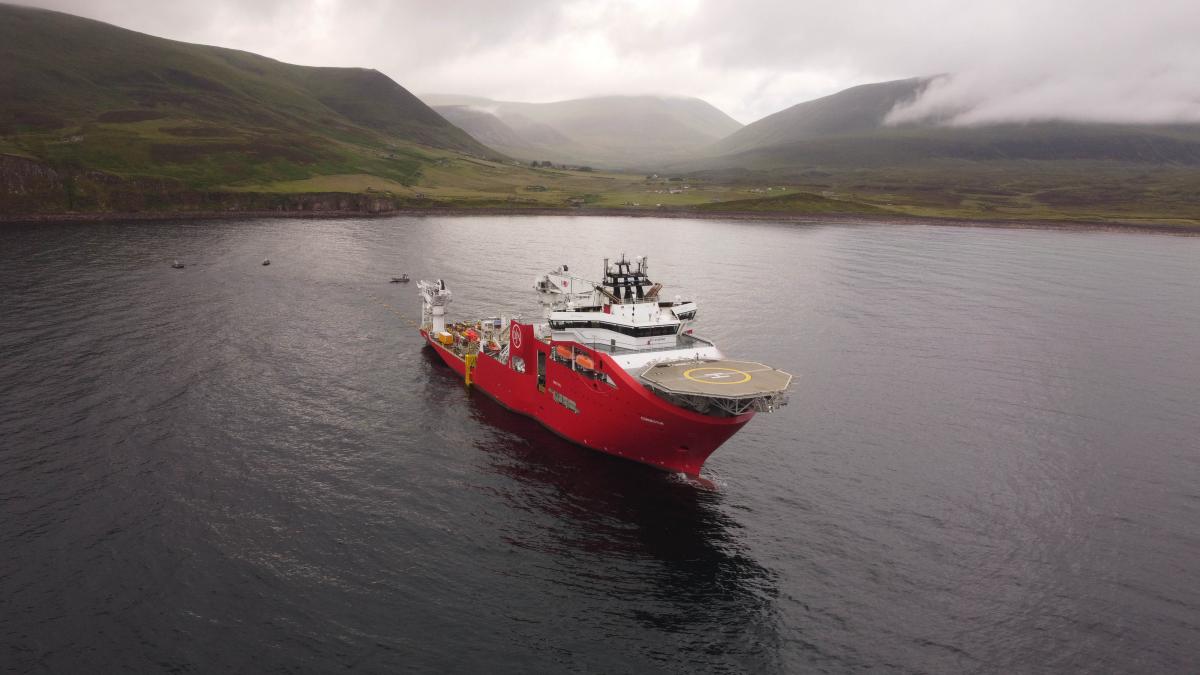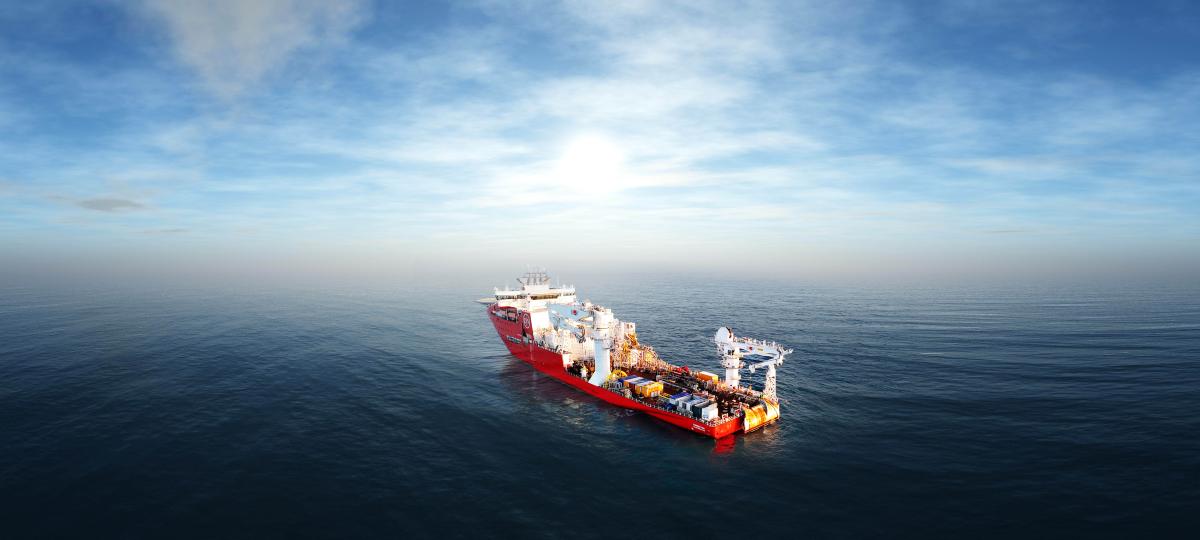
Laying cables in British stormy weather
The Pentland Firth success story
The Pentland Firth sea route runs between the Scottish mainland and the Orkney island of Hoy. This is where, in the summer of 2023, we installed a 33 kV interconnector cable that must ensure energy supplies to the Orkney Islands group. The difficult soil conditions and strong currents that characterise the strait were a major challenge. We nevertheless succeeded in turning it into a success story.
We started the works in April 2023, and four months later, in August, we were already delivering. The client SSEN's timeline was tight from the start, and yet we were still able to gain several weeks. Several factors played a role in this:
- Close monitoring of the subcontractor
Jan De Nul took on the installation and protection of the cable. We outsourced the fabrication and transport to cable manufacturer Ningbo Orient Cable. We closely monitored their project scope and made adjustments where necessary. With good result: the 43 km cable was delivered on time and without complications.
- A fleet at top speed
For the project, we deployed our cable trencher Swordfish for the first time, controlled from the offshore support vessel Symphony. This state-of-the-art trencher achieved excellent production rates and completed its scope faster than expected. Where the cable didn't require burying or where this was not possible due to the hardness of the seabed, the multi-purpose vessel Adhémar de Saint-Venant placed rock bags all around the cable to stabilise it against the current. And that too went more smoothly than anticipated.
- Planning geared to tidal current
During the installation works, we paid close attention to the tidal current, making sure we could install the cable in the strait when the current was at its weakest. When the current picked up again, we continued the works in the shelter of a bay.
- Lessons learnt from earlier cable installation campaign
Back in 2020, another contractor already installed an interconnector cable in Pentland Firth. Unfortunately, that one failed a year later, but it did allow us to learn lessons from their project execution. For example, the previous contractor installed cast-iron protection around the underwater cable using divers, which took longer than planned due to weather and currents. Where possible, we already installed that protection on board of the installation vessel Connector. This also saved us a lot of time.

First bundled cable installation for Greenlink
Further south in the UK, between Ireland and Wales, we started the Greenlink project. Here, we are installing and burying a DC interconnector to connect the electricity grids of the UK and Ireland with one another on behalf of Sumitomo Electrical Industries Ltd. Preparatory works started in mid-2022 and the entire project is due for completion in mid-2024.
A first for Jan De Nul
Greenlink will bring significant benefits to both Ireland and Wales. Besides additional jobs and energy security, it will provide 380,000 households with green power.
The DC interconnector consists of a trio of cables, a first for Jan De Nul. In 2023, we launched the first installation campaign starting from Wales. Due to delays in the delivery of the cable, installation could only start in October. It was a race against the clock, and especially against even worse weather. With storm Ciarán approaching, it was all hands on deck to have the entire cable installed and avoid extra connections. With success! All that is left is bringing the cable ashore in Wales which is postponed to 2024.
What’s next?
In the spring of 2024, we will continue the installation campaign, this time from the Irish side, connecting both cables. In addition to the Connector, the offshore support vessel Symphony with its trencher Swordfish and rock installation vessel Simon Stevin will also join in to bury and protect the cable.
This is the first time Jan De Nul has carried out a bundled cable installation, but undoubtedly not the last. Ever more countries want to interconnect their electricity grids. DC cables or direct current are more suitable to bridge these long distances than AC cables or alternating current.
